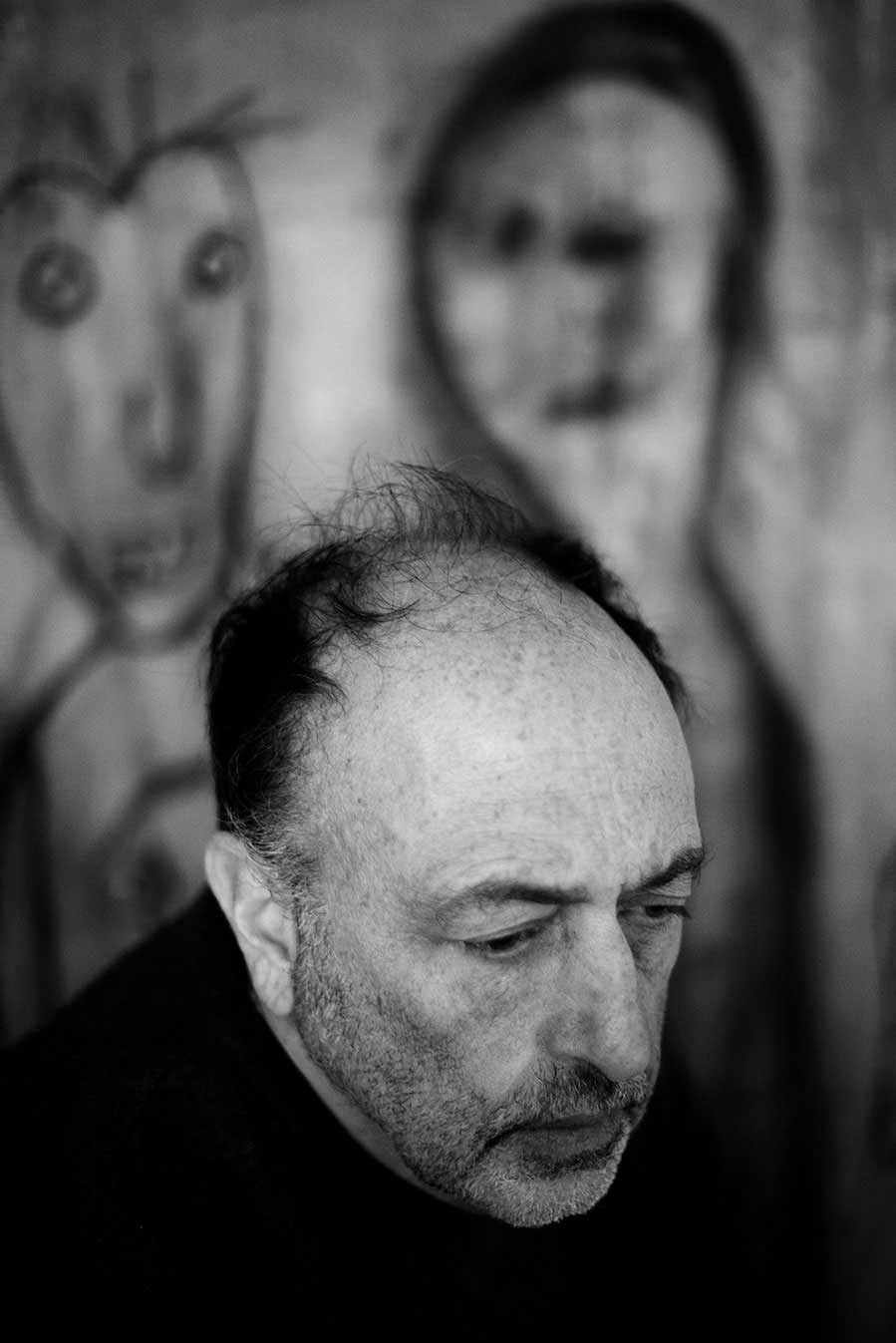The inaugural exhibition of Roger Ballen’s Inside Out Centre for the Arts, titled “End of the game,” addresses the devastation of wildlife in Africa. It confronts the viewer with profound and universal questions about human interaction with the natural world.
A collection of historical photographs, artifacts, and films relate to the origins of the African safari. In particular, this exhibition explores the “golden age” of big-game hunting expeditions carried out by colonialists and influential Western figures from 1860 onwards. It is this context that provides the basis for Ballen’s artistic response to the ecological problem that continues to affect the continent. A broad selection of the artist and founder’s works, including photography, installation, painting, and drawing, investigates the complex relationship between humans and animals.
With an unmistakable, unsettling, absurd, and surreal style, Ballen’s photographs and installations take the viewer on a journey to the deepest and most elusive recesses of the psyche. This process of internal psychological discovery, in which repressed or hidden material is revealed by viewing works of art, is reflected in the name of this institution, the “Inside Out Centre for the Arts.” Therefore, “End of the game” is a fitting choice for the inaugural exhibition of the Centre.”
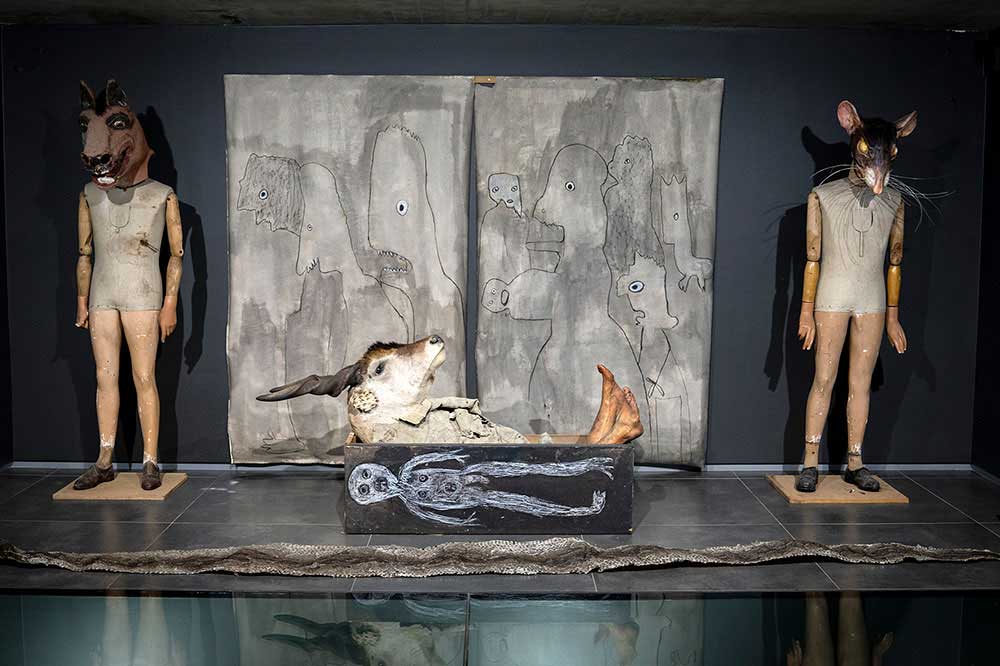
The name “Inside Out Centre for the Arts” reflects the aesthetic and purpose of Ballen’s work, which is to take the viewer on a journey to the hidden and elusive corners of the psyche. The design of the building is also inspired by this idea: the façade appears as a mysterious block, and the entrance is hidden. The exterior and interior of the building are ambiguous, as raw concrete surfaces are used throughout the space. The structure gives the impression of being turned “inside out.”
The center aims to promote art related to relevant topics for the African continent through exhibitions and educational programs. The criteria guiding the exhibitions are:
• The theme must directly or indirectly relate to the culture, history, or contemporary issues of the African continent.
• Exhibitions should link the documentary with the aesthetic, reality with fiction, and be educational and imaginary at the same time.
• The work should have a psychological impact that goes beyond the merely “contemporary.”
• There should be a connection between the exhibited works and the aesthetics of Roger Ballen and the “Ballenesque.” This includes works related to artistic movements such as Surrealism, Absurdism, raw art, and/or marginal art.
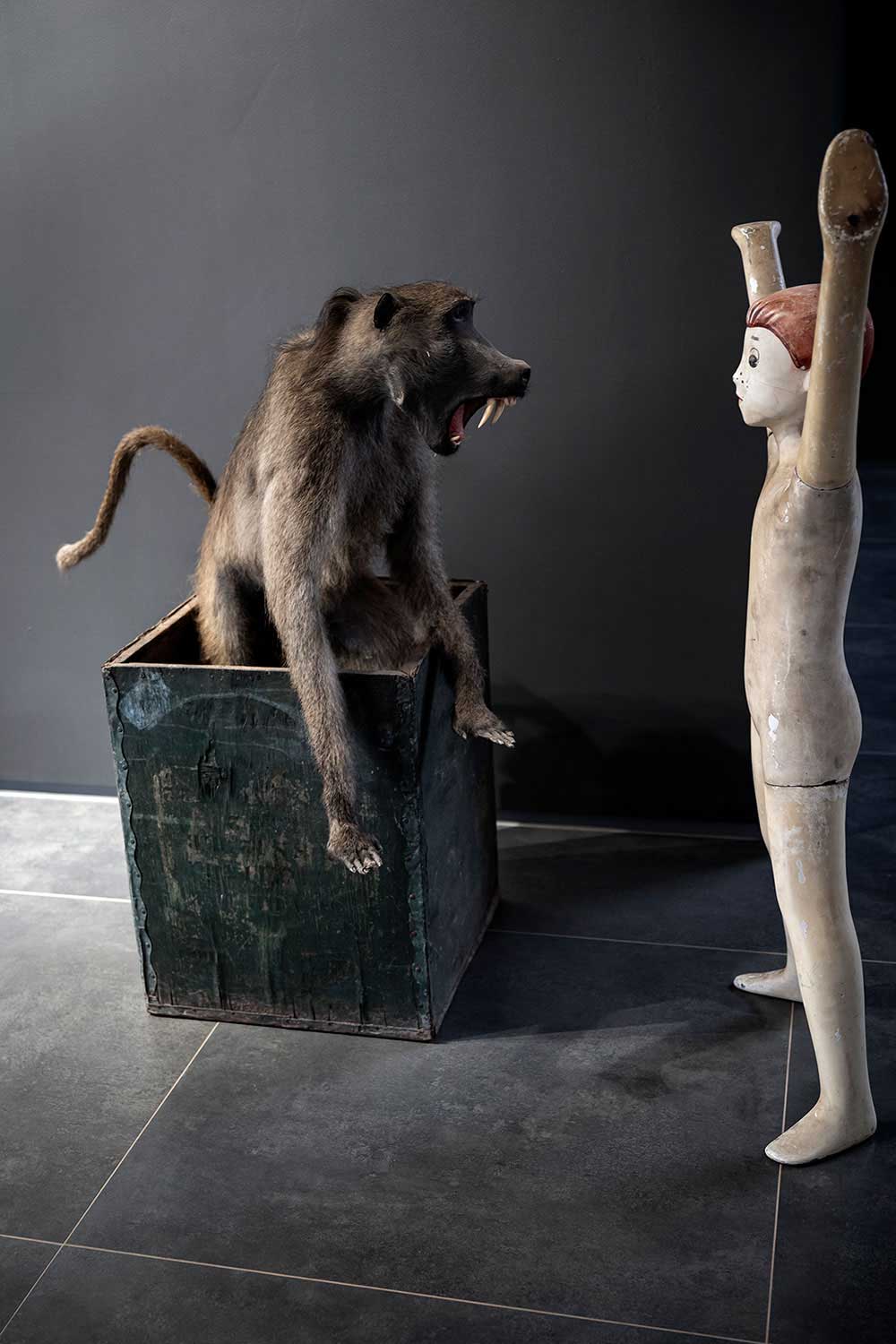
Roger Ballen’s first interest in the subject of this exhibition, the disappearance of wildlife in Africa, arose during his hitchhiking trip in 1974 from Cairo to Cape Town. As he prepared for the trip, he imagined a continent full of wild animals and big game species. To his surprise, this was not what he found. When he arrived in Tanzania, he decided it was time to visit some of the parks in this part of Africa. Ballen will never forget the experience of seeing a rhinoceros running down the road with a spear stuck in its bloody side during a tour in the Ngorongoro Park. At that moment, he understood why he had not seen any wild animals. The relationship between humans and animals has always been an important part of his career.
Ballen firmly believes that the relationship between animals and humans is essentially adversarial and exploitative. Although most societies try to deny this fact, it is evident to him that the destruction of the natural world continues unabated. Ballen hopes that this exhibition will not only provide a solid foundation for how art and contemporary issues such as the environment, ecology, and conservation can interact to create greater awareness of the problems and challenges facing humanity.
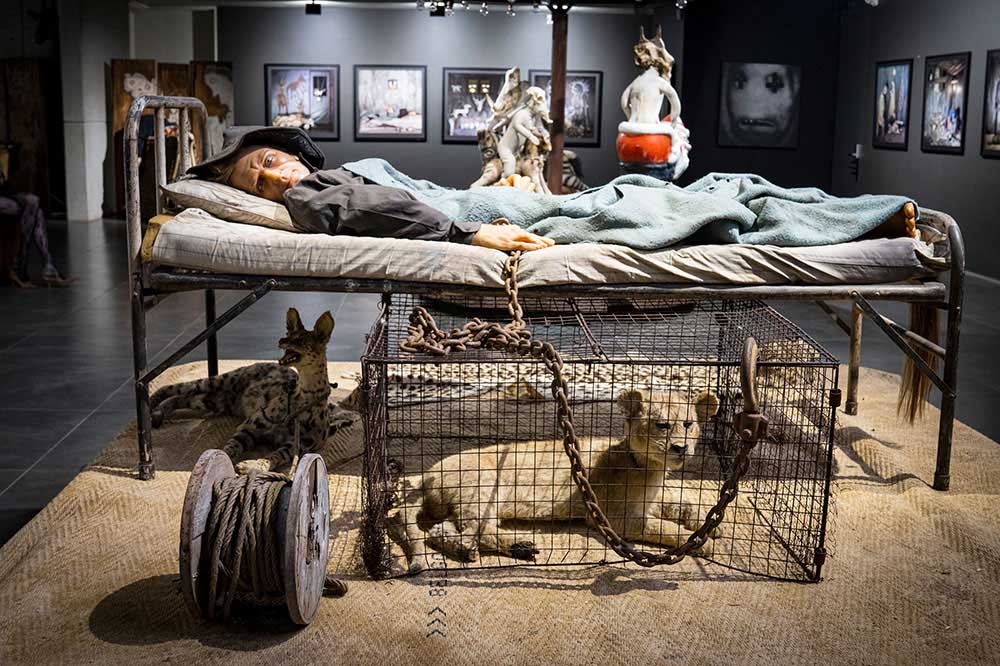
At the beginning of the 20th century, amidst the colonial conquest of lands and the exploitation of its people, big game hunting in Africa had reached its peak. Animals were hunted mainly for economic reasons, such as subsistence or trade. However, at that time, thousands of Europeans and Americans also traveled to Africa specifically to experience shooting and killing its big game. By then, the ‘safari’ had been born and to this day remains one of the main tourist attractions in East and Southern Africa. How does one explain the rapid rise and continuing appeal of big game hunting and safari hunting, which have led to the tragic massive destruction of wildlife and the ecological crisis on the continent today?
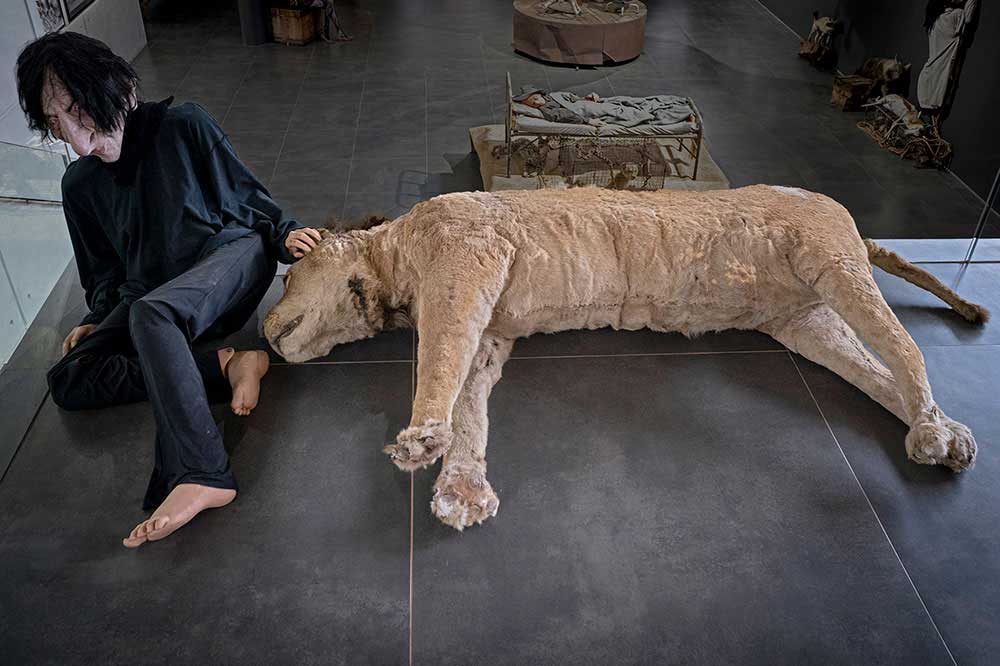
Encourages vital discussions about our treatment of animals, wildlife management, responsible tourism and environmental stewardship in our current world. – Roger Ballen –
The first exhibition at the Inside Out Centre for the Arts, founded by Roger Ballen, reflects on this question. The exhibition is named after the iconic 1965 book by American photographer Peter Beard, a photographic documentation of twenty years on the devastating effects of human intervention in Africa by entrepreneurs, explorers, and big game hunters seeking profit, power, and adventure. As Beard wrote in the introduction to his book:
The End of the Game, focusing on the end of an era, tries to suggest the shape of things to come: an elephant reaching for the last branch on a tree, a vestigial giraffe plodding out of the picture, its legs lost in mirage…the game is killing the game. There was a time when the hunter killed only for his life and food, when wild animals were driven from one area into another instead of being shot or poisoned… only 50 years ago man had to be protected from the beasts; today the beasts must somehow be protected from man… No one dreamed that the game could ever be depleted by a handful of immigrants with maps and gunpower, however immoderate he might be. And yet, within a matter of years, this paradise would become part of the modern world, a battlefield desert littered with carcasses of ele[1]phants beyond number, a flatland boneyard, a treeless bleached-out dustbowl, something climatic and conclusive.
About the Inside Out Centre for the Arts
The Inside Out Centre for the Arts is a not-for-profit Foundation established in 2008 by internationally renowned artist-photographer Roger Ballen. Its aim is to make a meaningful contribution to the cultural arena of Johannesburg and to the African continent at large.
As an art exhibition space, the Inside Out Centre presents shows that explore issues related to the African continent from a distinctively aesthetic and psychological perspective. In addition, as an educational centre, it facilitates a dynamic programme of educational talks, panel discussions, masterclasses and presentations that reflect on the current exhibition and topics relevant to the arts.
Exhibition viewing is by appointment only. Bookings can be made on the Inside Out Centre for the Arts website.
Tickets cost R150. This price includes a copy of the catalogue for the inaugural exhibition, End of the Game.
For further information visit www.insideoutcentreforthearts.com
Instagram: @insideoutcentre
Facebook: Inside Out Centre for the Arts
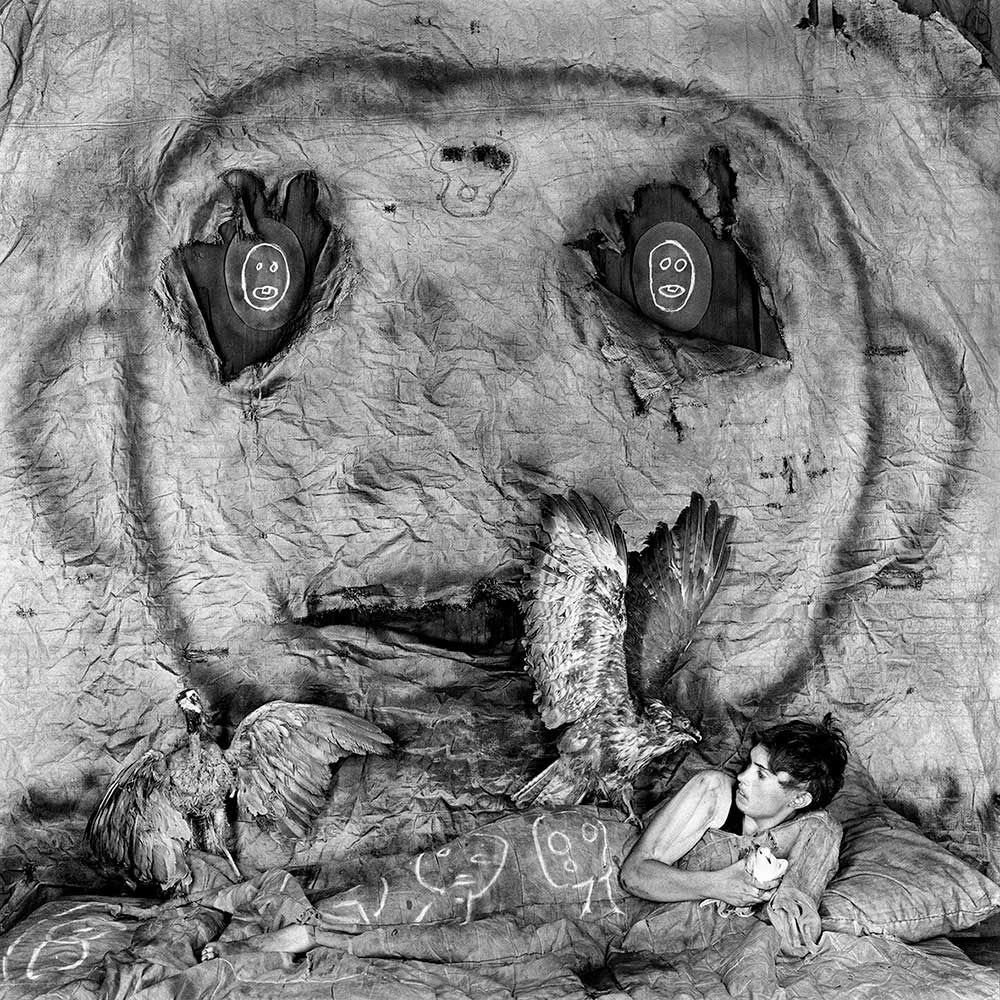
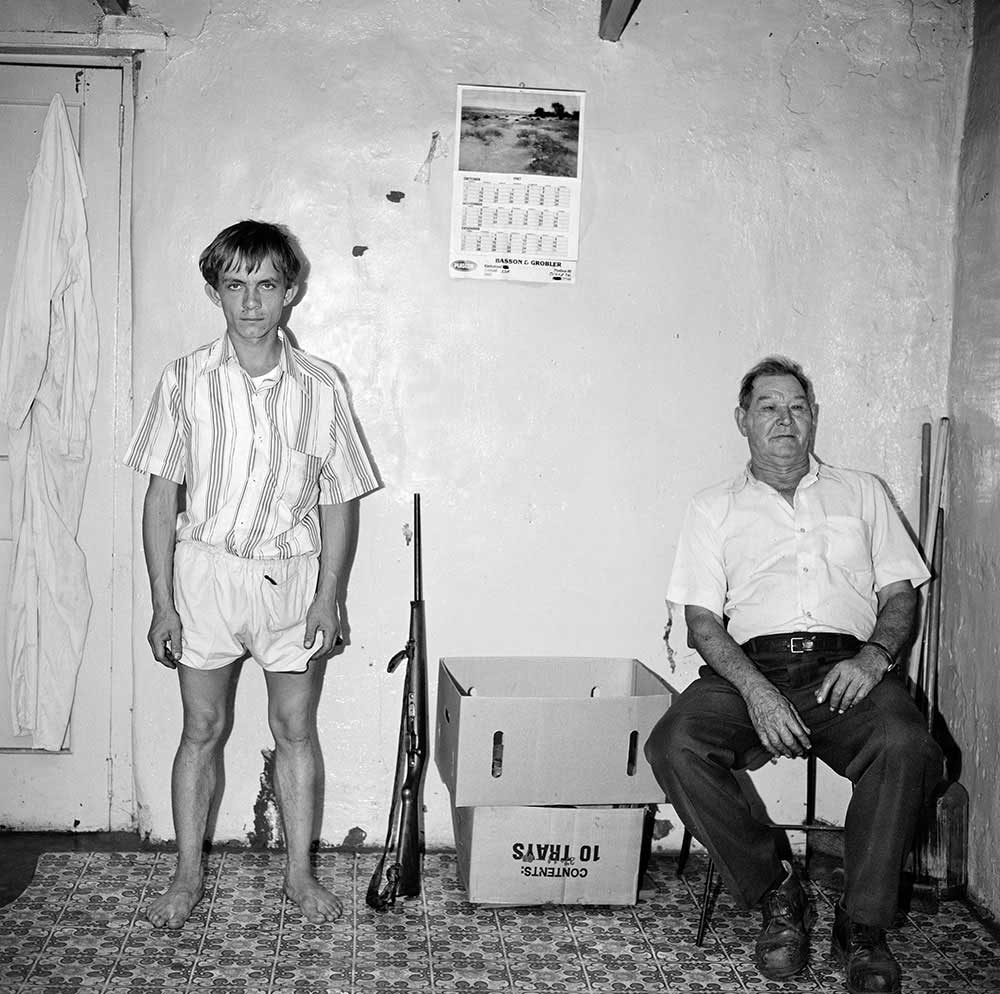
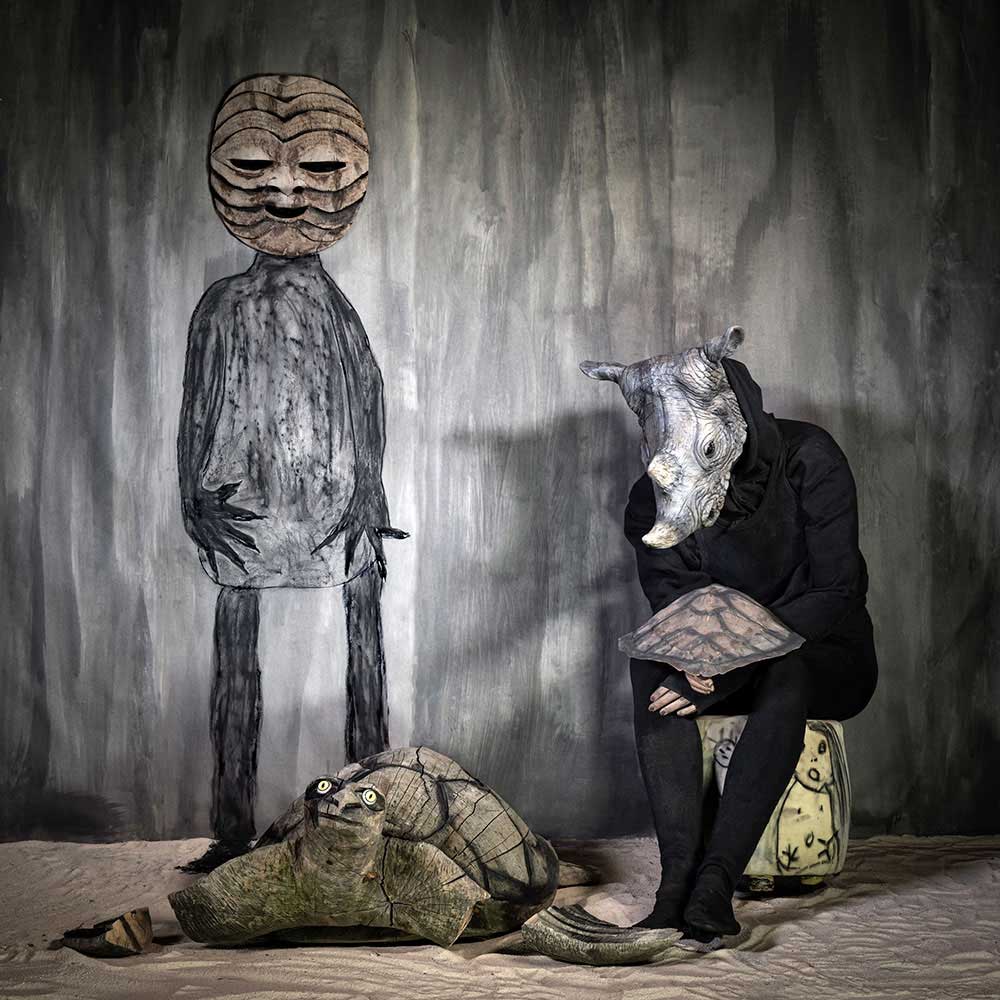
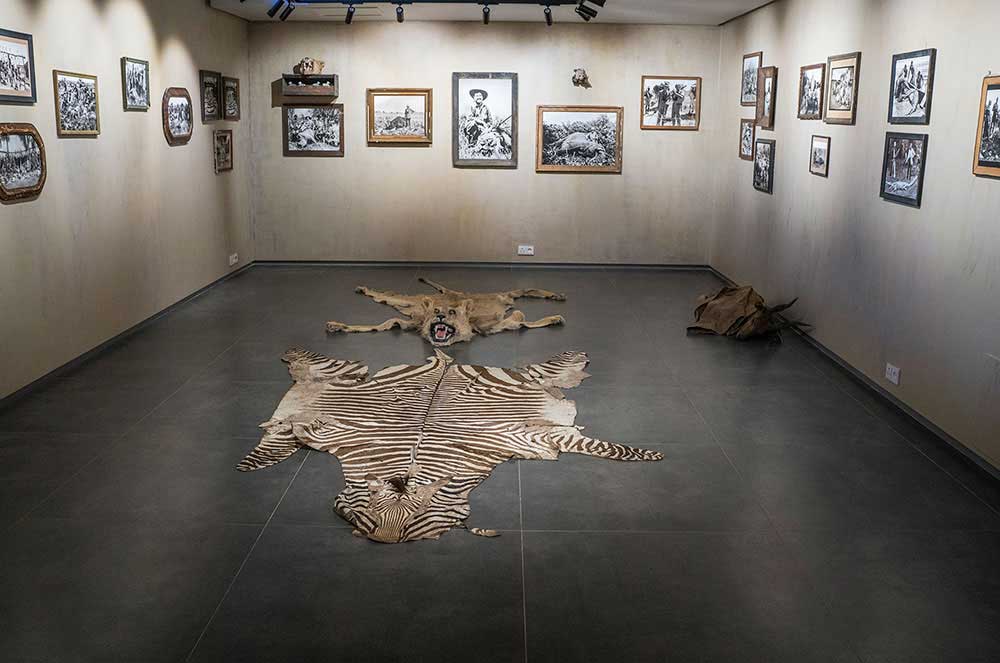
About Roger Ballen
Roger Ballen is a photographer and visual artist born in New York in 1950 and based in South Africa since the 70s. His work has been widely recognized for its distinctive and provocative style that has challenged the conventions of photography and contemporary art. Throughout his career, Ballen has created images that evoke a surreal and dark world, populated by enigmatic and often disturbing characters. His photographs are a testament to his ability to explore human psychology and the deepest emotions, using darkness and shadow to create a sense of unease in the viewer.
Among Ballen’s most notable works are his series “Platteland” and “Outland”, in which he documented life in the rural areas of South Africa and the marginalized characters that inhabit them. In these series, Ballen combined photography with elements of sculpture, drawing, and collage, creating unique images that straddle the line between the real and the imaginary. Despite the controversy generated by his work, Ballen has been widely recognized for his influence on contemporary photography and art in general. His work has been exhibited in numerous galleries and museums around the world and has been the subject of numerous publications and documentaries. [Official Website]




